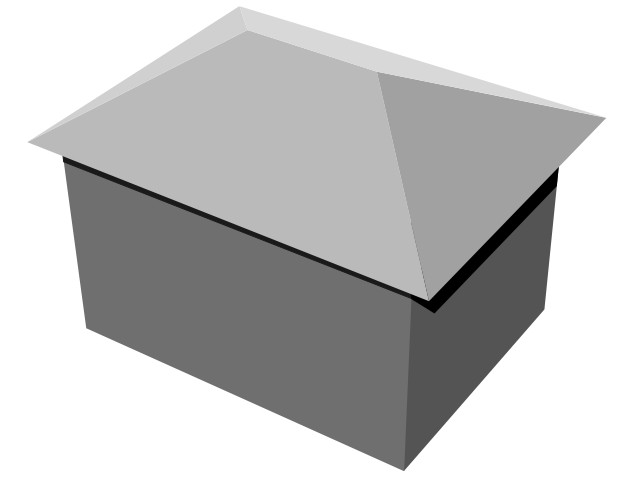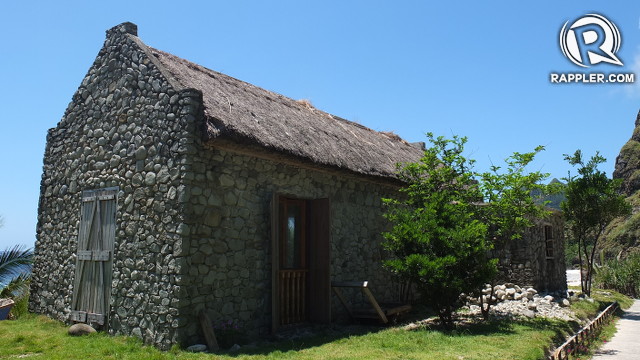SUMMARY
This is AI generated summarization, which may have errors. For context, always refer to the full article.
MANILA, Philippines – More than 360,000 houses in Eastern Visayas were totally destroyed by Super Typhoon Yolanda, highlighting the importance of typhoon-resistant architecture.
On Wednesday, November 20, prominent Filipino architects announced that their organization is surveying the affected areas to come up with appropriate designs for new homes. They are doing the designs for free, in coordination with the National Housing Authority and the Department of Public Works and Highways.
They also discussed features of a typhoon-ready house. Here are their recommendations:
1. Highly replicable
Willy Coscolluela, the architect behind the acclaimed Zuellig Building in Makati and SM Aura in Taguig, takes inspiration from a housing project in Guam which survived a storm and convinced stubborn locals to move in.
“It was very simple in design and very easy to do. In two weeks’ time, you can already have 6 units.”
Topy Vasquez, who has designed more than 100 buildings in the Visayas, shared his ideas for cubic permanent shelters.
Similar to giant concrete cylinders often found abandoned under bridges, they are hollow concrete cubes which can stand alone as single-room homes or be combined together to form bigger living spaces.
“It’s just like Lego. It can be a two-story structure. It can be a one-story house. Filipinos can use their creativity to customize it whichever way suits their needs.”
2. Uses durable materials
The days of patched-up metal sheets and crudely-stacked hollow cement blocks are over as far as the architects are concerned.
“You should use materials that can withstand the water and the wind. Concrete is the most logical for permanence and for strength,” Coscolluela said.
Concete is also highly abundant in the Philippines, a country with lots of sand and volcanic ash–ingredients for the building material.
3. 4-side slope roofs
“Quatro aguas” is a Spanish architectural term meaning a roof with 4 sides instead of just the two-sided A-frame design.

A 4-sided roof is more typhoon-resistant because it gives wind less traction to pry the roof away, a horrific phenomenon witnessed by people living in houses with two-sided roofs during the storm. A 4-sided roof is more streamlined and sealed against buffeting winds.
Eaves should no longer be a feature of typhoon-resistant homes. Eaves, which are the edges of a roof which jut out beyond the walls of the house, only give the wind more surface with which it can lift the entire roof.
Slab roofs made of concrete can also be effective. Homes with roofdecks survived the storm.
4. Stilts
The riverside-dwelling Badjaos built their houses on stilts because of the possibility of flooding, Royal Pineda of Budji+Royal architecture firm said. This can serve as a basis for flood-resistant and storm surge-resistant homes.
They can be built on legs. Even if the elevation is not that high, the force of rushing water will be lessened when it is allowed to go under the house and not just around it.
5. Tempered glass with protective sticker
Videos of Yolanda winds smashing windows are enough to make anyone shudder at the thought of being near those windows during the storm. The flying jagged metal pieces can no doubt cause serious injury to anyone in the vicinity.
But tempered glass will not have the same fatal effect, assured Coscolluela. When glass is tempered, it falls in tiny pieces like “monggo seeds,” pieces too small to cause serious injury.
But combine the tiny glass bits with 300-kilometer-per-hour winds and you’re talking of another matter entirely. That’s why Pineda recommends adding a protective film or sticker over tempered glass. This would keep the glass in place even when shattered by high-velocity winds.
The best case scenario would be tempered glass that is also laminated but this can be pricey.
6. Storm shutters
If you can’t stop glass windows from breaking, why not protect them from the storm as well? Pineda recommends installing storm shutters over windows and doors, thus effectively sealing the house from winds and rain.
7. Safe, elevated location
Location is everything in typhoon-ready architecture. Coastal communities should be moved further away from the shoreline to lessen the risk of storm surges (flooding due to abnormal sea level rise). The vacated shoreline can then be converted into a public park, a place of leisure that won’t be a big loss in case of a storm surge.
Before Yolanda, two schools, a hospital, and the Tacloban city hall were located near the shoreline. (READ: What made Tacloban so vulnerable to Haiyan?)
They should not be constructed in areas assessed to be vulnerable to landslides and flooding.
8. Revise building standards
The Philippine Building Code must be updated to keep up with storms that are getting stronger, the architects agreed.
The Code requires that walls of buildings should withstand at least 250 kph winds. Because Yolanda’s winds went over 300 kph, this item must be revisited. Also, the practice of building drainage systems to last for “x” amount of rainfall should be changed since rain and typhoons are becoming more frequent. – Rappler.com
Typhoon-proofing your house is a lot of work, from design to construction. To know how you can save up on your home and living items online, click here.
Add a comment
How does this make you feel?

There are no comments yet. Add your comment to start the conversation.